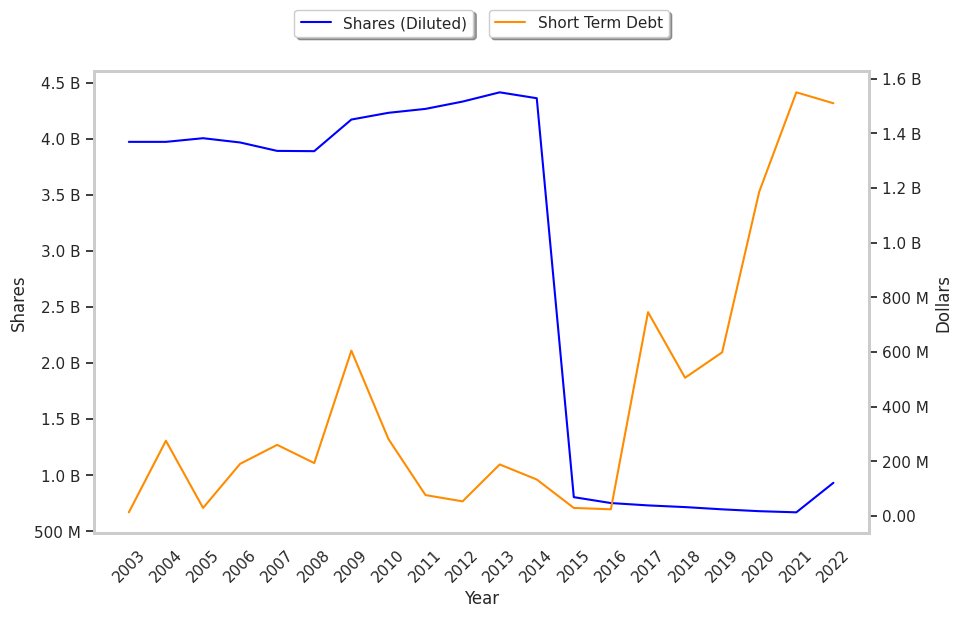Canadian Pacific Railway was one of the market's biggest losers today, losing 3.0% of its value and underperforming both the S&P500 and Dow Industrial composite indices by 1.0%. The large-cap Industrials company ended the day at $74.58, closing in on its 52 week high low of $65.17 and is 18.26% below its average target price of $91.24. Over the last 12 months, Canadian Pacific Railway is up 10.0%, and has underperformed the S&P 500 by 8.0%. The stock has an average analyst rating of buy.
Canadian Pacific Railway has a trailing 12 month price to earnings (P/E) ratio of 21.9, which corresponds to its share price divided by its trailing earnings per share (EPS) of $3.41. The company's forward P/E ratio is 21.5 based on its forward EPS of $3.47.
Earnings refer to the net income of the company from its sales operations, and the P/E ratio tells us how much investors are willing to pay for each dollar of these earnings. By way of comparison, the Industrials sector has historically had an average P/E ratio of 20.49. Whether the company's P/E ratio is within a high or low range tells us how investors are currently valuing the stock's earning potential, but it doesn't tell us how its price will move in the future.
Another metric for valuing a stock is its Price to Book (P/B) Ratio, which is its share price divided by its book value per share. The book value refers to the sum of all of the company's tangible assets and liabilities. Canadian Pacific Railway's P/B ratio of 1.73 indicates that the company is fairly valued when compared to the Industrials sector's average P/B ratio of 3.78.
To understand Canadian Pacific Railway's business, and therefore its attractiveness as a potential investment, we must analyze its margins in two steps. First, we look at its gross margins, which take into account only the direct cost of providing the product or service to the customer. This enables us to determine whether the company benefits from an advantageous market position:
| Date Reported | Revenue ($ k) | Cost of Revenue ($ k) | Gross Margins (%) | YoY Growth (%) |
|---|---|---|---|---|
| 2023-02-24 | 8,814,000 | -3,230,000 | 63 | -5.97 |
| 2022-02-23 | 7,995,000 | -2,639,000 | 67 | -2.9 |
| 2021-02-18 | 7,710,000 | -2,428,000 | 69 | 7.81 |
| 2020-04-29 | 7,792,000 | -2,769,000 | 64 | -1.54 |
| 2019-01-24 | 7,316,000 | -2,587,000 | 65 | -2.99 |
| 2018-04-05 | 6,554,000 | -2,176,000 | 67 |
- Average gross margins: 65.8 %
- Average gross margins growth rate: 0.1 %
- Coefficient of variability (lower numbers indicate more stability): 3.4 %
Next, we consider the Canadian Pacific Railway's operating margins, which take into account overhead. This tells us whether the company's business model is fundamentally profitable or not:
| Date Reported | Total Revenue ($ k) | Operating Expenses ($ k) | Operating Margins (%) | YoY Growth (%) |
|---|---|---|---|---|
| 2023-02-24 | 8,814,000 | -2,255,000 | 38 | -5.0 |
| 2022-02-23 | 7,995,000 | -2,150,000 | 40 | -6.98 |
| 2021-02-18 | 7,710,000 | -1,971,000 | 43 | 7.5 |
| 2020-04-29 | 7,792,000 | -1,899,000 | 40 | 0.0 |
| 2019-01-24 | 7,316,000 | -1,768,000 | 40 | 5.26 |
| 2018-04-05 | 6,554,000 | -1,859,000 | 38 |
- Average operating margins: 39.8 %
- Average operating margins growth rate: -0.1 %
- Coefficient of variability (lower numbers indicate more stability): 4.6 %
Since both Canadian Pacific Railway's gross margins and operating margins tend to be positive, we know that its business is currently profitable. However, it's important to take into account their variability and overall growth trend to make a definitive conclusion regarding the company's strength.
Our final point of analysis is Canadian Pacific Railway's free cash flow. While earnings and margins are calculated on the basis of a company's delivered goods, they do not actually represent physical payments that flow into the coffers. The actually money that the company has -- minus its capital expenditures -- is reported as its free cash flow, which for Canadian Pacific Railway is as follows:
| Date Reported | Cash Flow from Operations ($ k) | Capital expenditures ($ k) | Free Cash Flow ($ k) | YoY Growth (%) |
|---|---|---|---|---|
| 2023-02-24 | 4,142,000 | -1,499,000 | 5,641,000 | -67.62 |
| 2022-02-23 | 3,688,000 | -13,735,000 | 17,423,000 | 259.31 |
| 2021-02-18 | 2,802,000 | -2,047,000 | 4,849,000 | 5.16 |
| 2020-04-29 | 2,990,000 | -1,621,000 | 4,611,000 | 10.18 |
| 2019-01-24 | 2,712,000 | -1,473,000 | 4,185,000 | 20.26 |
| 2018-04-05 | 2,182,000 | -1,298,000 | 3,480,000 |
- Average free cash flow: $5.64 Billion
- Average free cash flow growth rate: 0.0 %
- Coefficient of variability (lower numbers indicating more stability): 13997805296.5%
This is the pool of liquidity that the company can use to reinvest in its business and to pay its equity investors a dividend. Investors in Canadian Pacific Railway enjoy a dividend yield of 1.0%, and they can expect this to continue based on the company's positive cash flows.
In conclusion, Canadian Pacific Railway may be unattractive to investors with a low risk tolerance or a long term investment horizon. Stocks such as these may offer strong returns in the short term, but for now the long term potential of the company is not substantiated -- by the numbers, at least.



